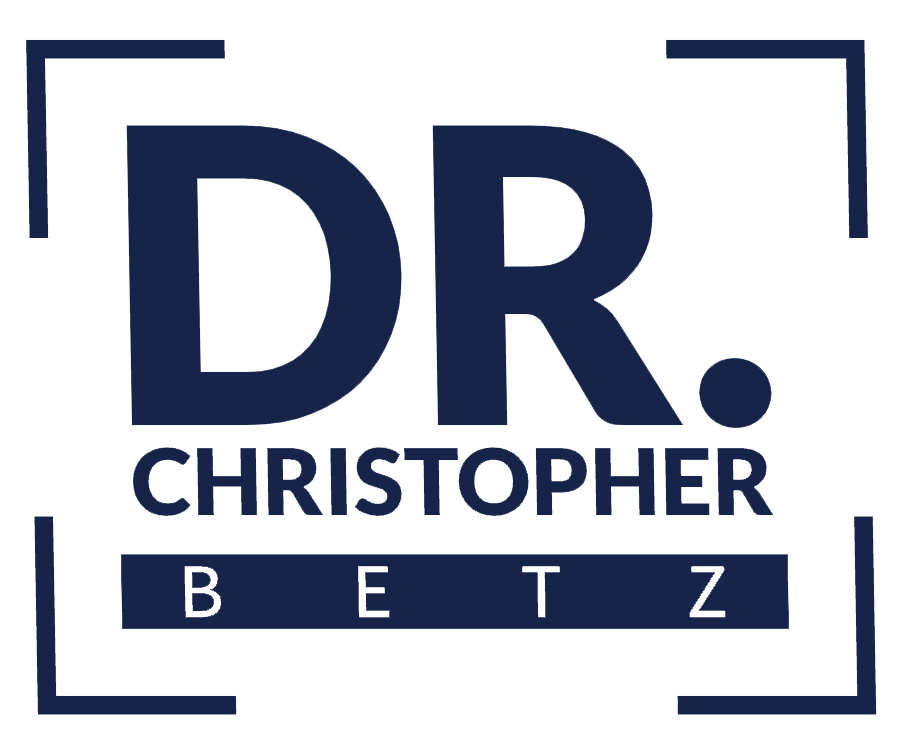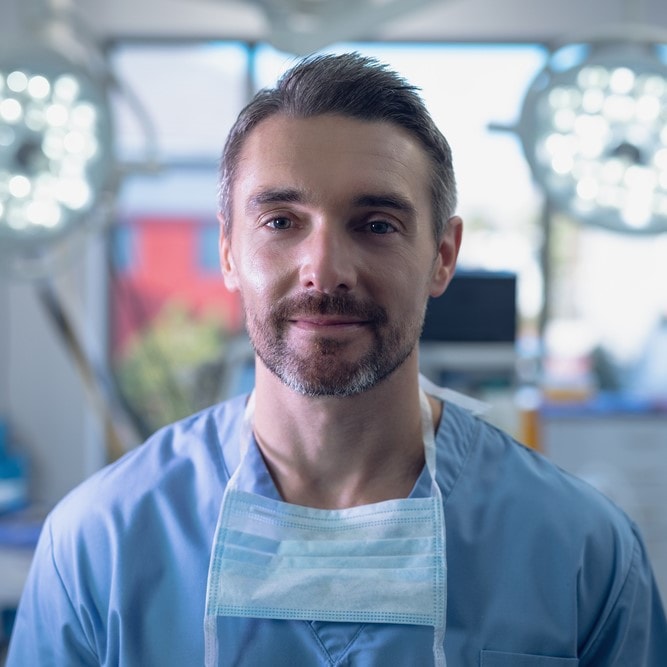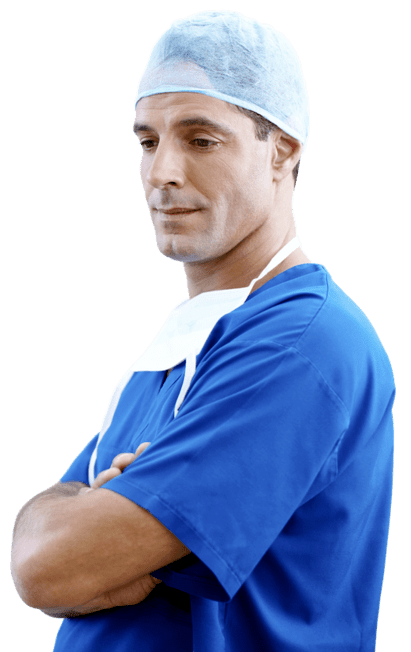SHOULDER & ARM
Rotator Cuff Tear
Rotator Cuff Tear
The diagram to the right illustrates how surgical intervention can repair a torn rotator cuff.
The shoulder is a ball-and-socket joint: the top of the humerus (upper arm bone) forms the ball and the edge of the scapula (shoulder blade), called the glenoid cavity, creates the socket. The humerus attaches to the scapula by the rotator cuff muscles. There are four muscles that make up the rotator cuff which allow you to lift and rotate your arm.
When there is a torn rotator cuff muscle, it is either partially torn or the tendon(s) have been completely severed from the humerus bone. Rotator cuff tears result from either an acute injury or degeneration over time. Both types of tears are often associated with overhead and lifting motions. In patients over the age of 40, shoulder pain is often the result of a torn rotator cuff.
- Acute Injury: acute tears occur with a significant fall or trying to lift an object that is too heavy. They are often associated with other shoulder injuries such as dislocation or a broken collarbone.
- Degeneration: degeneration is the most common cause rotator cuff tears. They are the result of slight fraying of the tendon over time due to repetitive stress. The risk of rotator cuff tears increases with age.
Rotator cuff injuries and tears are commonly seen in baseball players, tennis players, rowers, weightlifters, construction workers, and carpenters.
Symptoms:
- Weakness
- Loss of or limited range of motion
- Dull, achy pain
- Cracking with certain movements
- Swelling
- Pain with:
- Resistance
- Reaching
- Lifting everyday objects
- Lifting or lowering the arm
- Sleeping on affected side
If your symptoms last longer than 2 weeks and interfere with daily activity you should consult your primary care physician for a referral.
What To Expect During Your Appointment:
During your appointment, Dr. Betz will perform a physical exam to test range of motion in the shoulder and the arm strength. In-office imaging may be done or an MRI may be set up to diagnose the cause of your pain. Once the results of your imaging come back, Dr. Betz will provide treatment options and help you decide the course of action that is best for you.
Treatment
Dr. Betz performs an in-office exam on the patient to check for range of motion and arm strength.
Non-Surgical Options:
- Rest
- Medication: non-steroidal anti-inflammatories are often prescribed to minimize swelling and pain.
- Physical Therapy: strengthening the shoulder muscles will help relieve pain and prevent further injury. Stretching is also performed to help regain mobility.
- Injections: If the other non-surgical treatments fail, Dr. Betz can use injections to help reduce pain.
- Steroid Injection (Cortisone): steroids are proven to be very effective at reducing inflammation and pain when injected directly into the joint space.
- Platelet Rich Plasma (PRP): your own blood is used to extract platelet-rich plasma, which is then injected into the shoulder joint. The platelets within the plasma stimulate the body to repair itself.
Surgical Options:
If non-surgical treatments fail to improve pain, Dr. Betz will discuss surgery as an option. Each patient and tear is different, but most tears can be treated arthroscopically. For more information on arthroscopic surgery please see “Arthroscopic Surgery”.
Labral Tear
Labral Tear
The labrum is a piece of cartilage that lines and reinforces a ball-and-socket joint, like the shoulder joint. The diagram to the right illustrates two possible locations labral tears can occur in the shoulder joint.
The shoulder is a ball-and-socket joint: the top of the humerus (upper arm bone) forms the ball and the edge of the scapula (shoulder blade), called the glenoid cavity, creates the socket. The glenoid cavity is extremely shallow and capped by a layer of cartilage called the labrum. The labrum molds the glenoid cavity to the head of the humerus to stabilize the joint. The labrum also attaches to several ligaments and tendons, such as the biceps tendon.
A torn labrum, also known as “thrower’s arm” in young athletes, occurs when the soft tissue of the labrum gets caught between the glenoid cavity and the head of the humerus. Labral tears can result from either acute injury or degeneration over time. Both types of tears are associated with overhead, lifting, pulling, and jerking motions. In individuals under the age of 40, symptomatic shoulder pain is generally the result of a labral tear.
- Acute Injury: acute tears account for the largest percent of labral tears. Common injuries include falling on an outstretched arm, a blow to the shoulder, or a shoulder dislocation.
- Degeneration: degeneration tears are the result of repetitive stress, pulling the labrum farther between the glenoid cavity and the humerus.
Labral tears are commonly seen in athletes who play baseball, golf, football, tennis, or lifting weights.
Symptoms:
- Popping/catching/locking sensation with specific movements
- Loose/unstable feeling in the shoulder
- Deep shoulder pain
- Loss of throwing velocity (in young athletes)
- Loss of or limited range of motion
- Loss of strength
- Pain with:
- Turning a steering wheel
- Lifting objects
- Sleeping on affected side
- Daily activity
If your symptoms last longer than 2 weeks and interfere with daily activity you should consult your primary care physician for a referral.
What To Expect During Your Appointment:
During your appointment, Dr. Betz will perform a physical exam to test range of motion in the shoulder and the arm strength. In-office imaging may be done or an MRI may be set up to diagnose the cause of your pain. Once the results of your imaging come back, Dr. Betz will provide treatment options and help you decide the course of action that is best for you.
Treatment
Dr. Betz performs an in-office exam on the patient to check for range of motion and arm strength.
Non-Surgical Options:
- Rest
- Medication: non-steroidal anti-inflammatories are often prescribed to minimize swelling and pain.
- Physical Therapy: strengthening the shoulder muscles will help relieve pain and prevent further injury. Stretching is also performed to help regain mobility.
- Injections: If the other non-surgical treatments fail, Dr. Betz can use injections to help reduce pain.
- Steroid Injection (Cortisone): steroids are proven to be very effective at reducing inflammation and pain when injected directly into the joint space.
- Platelet Rich Plasma (PRP): your own blood is used to extract platelet-rich plasma, which is then injected into the shoulder joint. The platelets within the plasma stimulate the body to repair itself.
Surgical Options:
If non-surgical treatments fail to improve pain, Dr. Betz will discuss surgery as an option. Each patient and tear is different, but most tears can be treated arthroscopically. For more information on arthroscopic surgery please see “Arthroscopic Surgery”.
Arthritis
Arthritis
The diagram to the right illustrates arthritis within the shoulder (glenohumeral) joint.
The shoulder consists of three bones: the clavicle (collar bone), the scapula (shoulder blade), and the humerus (upper arm bone). These three bones create the two joints of the shoulder:
- Acromioclavicular (AC joint): formed where the clavicle and scapula join together.
- Glenohumeral joint: formed where the humerus and scapula join together to form the ball-and-socket joint of the shoulder.
Both of these joints can equally be affected by arthritis and there are five types of arthritis that can affect the shoulder joints:
- Osteoarthritis (OA): OA, also known as wear-and-tear arthritis, is a condition the destroys the cartilage covering of the bones, allowing the bones to rub against each other and cause pain. OA usually affects patients over the age of 50 and most commonly occurs within the AC joint.
- Rheumatoid Arthritis (RA): RA is an autoimmune disease in which the immune system attacks normal tissues in the joints such as the lining of the joints, cartilage, and bone. RA is the most common type of autoimmune arthritis, usually affecting both sides of the body equally. RA causes pain and swelling of joints and can affect patients of any age.
- Post-Traumatic Arthritis: Post-traumatic arthritis is similar to OA and can develop years after an injury, such as a shoulder dislocation.
- Rotator Cuff Arthropathy: this type of arthritis occurs due to a long-term, untreated rotator cuff tear. Large untreated tears eventually allow the humerus to rub against the acromion (tip of the shoulder blade), causing pain and inflammation.
- Avascular Necrosis (AVN): AVN is a condition that occurs when the blood supply to the humerus is disrupted. Without adequate blood supply, the bone cells making up the humerus begin to die. As AVN progresses, it can start to damage the glenoic cavity. Causes of AVN include heavy alcohol consumption, sickle cell disease, trauma such as severe shoulder fractures, and steroid use.
Symptoms:
- Limited range of motion
- Grinding, clicking, or cracking sensation/sound
- Glenohumeral arthritis pain is typically described as a deep ache centered in the back of the shoulder
- Acromioclavicular arthritis pain is typically on the top of the shoulder and can radiate into the neck
- Pain with:
- Lifting
- Brushing hair
- Sleeping on affected side
If your symptoms last longer than 2 weeks and interfere with daily activity you should consult your primary care physician for a referral.
What To Expect During Your Appointment:
During your appointment, Dr. Betz will perform a physical exam to test range of motion in the shoulder and the arm strength. He will also look for signs of previous injury, involvement of other joints (common sign of RA), and determine which shoulder structures are affected. In-office imaging may be done or an MRI may be set up to diagnose the cause of your pain. Once the results of your imaging come back, Dr. Betz will provide treatment options and help you decide the course of action that is best for you.
Treatment
Dr. Betz performs an in-office exam on the patient to check for range of motion and signs of arthritis.
Non-Surgical Options:
- Rest
- Medication: non-steroidal anti-inflammatories are often prescribed to minimize swelling and pain.
- Physical Therapy: strengthening the shoulder muscles will help relieve pain. Stretching is also performed to help regain mobility.
- Injections: If the other non-surgical treatments fail, Dr. Betz can use injections to help reduce pain.
- Steroid Injection (Cortisone): steroids are proven to be very effective at reducing inflammation and pain when injected directly into the joint space.
Surgical Options:
If non-surgical treatments fail to improve pain, Dr. Betz will discuss surgery as an option. Each patient is different, therefore surgical plans vary greatly depending on the patient’s stage of arthritis and individual needs.


